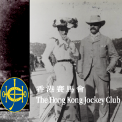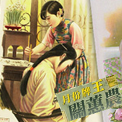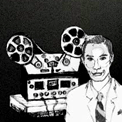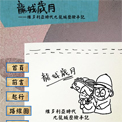-
History & SocietyGeography & EnvironmentArt & CultureCommunication & Media
-
History & SocietyGeography & EnvironmentArt & CultureCommunication & Media
-
View Oral History RecordsFeatured StoriesAbout Hong Kong Voices
-
Subsidiary websites
-
Hong Kong Memory Project
Martial Arts

With Huangmei Opera, period drama, wenyi (drama), and musical genres accounting for the majority of films produced in Shaw Studios in its early days, it is not surprising that its actresses such as Linda Lin Dai, Betty Loh Ti, Li Lihua and Ivy Ling Po enjoyed superstar status. But, in the 1960s, Shaw’s revised its directions as it turned toward the martial arts genre. It appointed rising directors such as Hu King-chuan (King Hu) and Chang Cheh and changed promotion tactics to elevate masculine lead actors including Jimmy Wang Yu, Lo Lieh, David Chiang, Ti Lung, Chen Kuan-tai and Alexander Fu Sheng, who played major roles in the films.
In 1928, Mingxing Film Company in Shanghai had started a trend for martial arts films with the novel-adapted series The Burning of Red Lotus Temple, which prompted other companies to follow its lead. Even Tianyi, Shaw’s progenitor, had released a martial arts title Lee Fei-fei the Heroine to test market waters. After 1949, this martial arts tradition migrated southwards to Hong Kong, and bore fruit in the Cantonese film market. In the 1950s, The Story of Wong Fei-hung series directed by Wu Pang and starring Kwan Tak-hing became a box-office hit in Hong Kong and Southeast Asia. Films in the “Huang Fei-hung” series numbered over 60, and starred numerous southern martial artists and northern actors (for instance Lau Cham and his son Lau Kar-leung, Yuan Xiaotian and his apprentice Tang Chia). This collaboration between Southern and Northern martial arts styles testified to the rise of martial artists in the Hong Kong film industry. In the mid-1960s, Great Wall Pictures adapted and produced The Jade Bow (1966) from the martial arts novelist Liang Yu Sheng, and the action directors of the film were Lau Kar-leung and Tang Chia. The many action scenes in the film held the fascination of the audience.
In 1965, Shaw’s put forward a new slogan, “A New Era of Colour Martial Arts Movies”, and accordingly, hired up-and-coming directors, including Hu King-chuan (King Hu) and Chang Cheh to make such films. Hu and Chang were educated on the Mainland, and deeply influenced by the Beijing Opera tradition; at the same time, they were inspired by Japanese and western films. Chang Cheh’s One-Armed Swordsman (1967) and Golden Swallow (1968) grossed spectacularly in the box office; Hu King-chuan (King Hu)’s Come Drink with Me (1966) was also highly acclaimed for its resonance with both Beijing Opera and Japanese samurai-styled fighting. Later, Shaw’s recruited Lau Kar-leung and Tang Chia to help Chang Cheh with martial arts choreography, adding a realistic sense of combat characteristic of the Southern Style martial arts of Guangdong. In the 1970s, Bruce Lee returned to Hong Kong bearing his trademark “real kung-fu” fighting style, which inspired Chang Cheh to make Vengeance (1970) and Blood Brothers (1973) for Shaw’s; both films were set in the early Republican Era. With the help of Lau Kar-leung, Chang also directed Five Shaolin Masters (1974), Shaolin Temple (1976), and Disciples of Shaolin (1975), bringing into the cinema the legendary heroes of Southern Shaolin and Guangdong, and inspiring Taiwan filmmakers to produce similar kung-fu titles. In 1975, Lau Kar-leung, now himself a director, made The Spiritual Boxer (1975), Challenge of the Masters (1976), and The 36th Chamber of Shaolin (1977), all of which highlighted “real kung-fu” and realistic combat scenes while further highlighting southern traditional elements. Chu Yuan, another prolific Cantonese director at Shaw’s, adapted works by the novelist Ku Lung to produce Killer Clans (1976) and The Magic Blade (1976). Both movies brought to life Ku Lung’s fantastical world of martial arts, starting a new fad in cinema.Photos
Videos
Tags:
no tagsCopyright © 2012 Hong Kong Memory Project. All rights reserved.

















